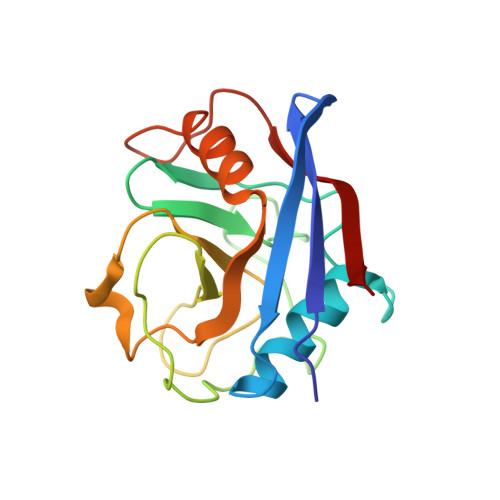A computationally designed binding mode flip leads to a novel class of potent tri-vector cyclophilin inhibitors.
De Simone, A., Georgiou, C., Ioannidis, H., Gupta, A.A., Juarez-Jimenez, J., Doughty-Shenton, D., Blackburn, E.A., Wear, M.A., Richards, J.P., Barlow, P.N., Carragher, N., Walkinshaw, M.D., Hulme, A.N., Michel, J.(2019) Chem Sci 10: 542-547
- PubMed: 30746096
- DOI: https://doi.org/10.1039/c8sc03831g
- Primary Citation of Related Structures:
6GJI, 6GJJ, 6GJL, 6GJM, 6GJN, 6GJP, 6GJR, 6GJY - PubMed Abstract:
Cyclophilins (Cyps) are a major family of drug targets that are challenging to prosecute with small molecules because the shallow nature and high degree of conservation of the active site across human isoforms offers limited opportunities for potent and selective inhibition. Herein a computational approach based on molecular dynamics simulations and free energy calculations was combined with biophysical assays and X-ray crystallography to explore a flip in the binding mode of a reported urea-based Cyp inhibitor. This approach enabled access to a distal pocket that is poorly conserved among key Cyp isoforms, and led to the discovery of a new family of sub-micromolar cell-active inhibitors that offer unprecedented opportunities for the development of next-generation drug therapies based on Cyp inhibition. The computational approach is applicable to a broad range of organic functional groups and could prove widely enabling in molecular design.
Organizational Affiliation:
University of Edinburgh , Joseph Black Building, King's Buildings, David Brewster Road , Edinburgh , Scotland EH9 3FJ , UK . Email: [email protected].















